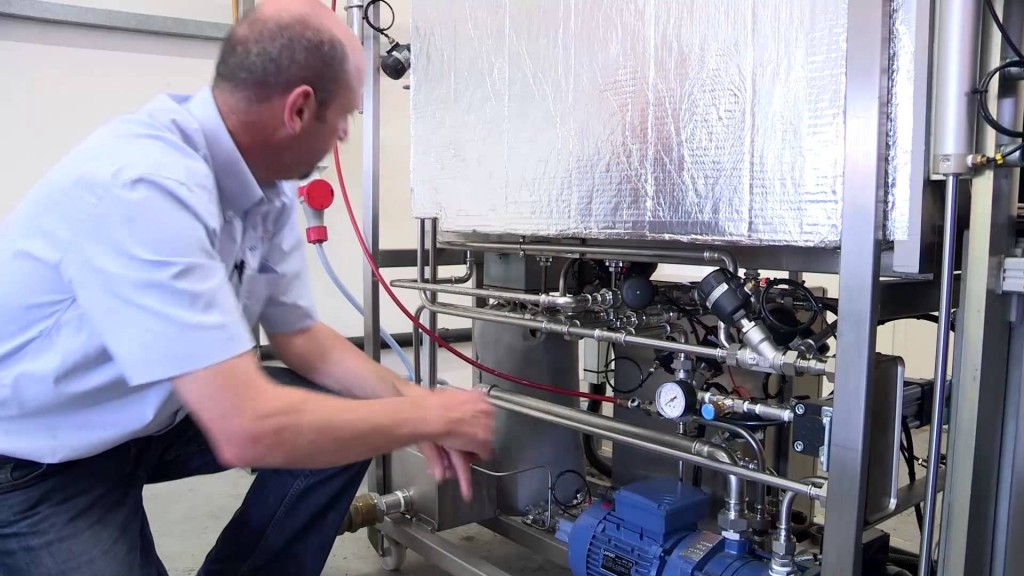It’s all material when it comes to choosing a Bürkert angle seat valve
Choosing the right specification for your angle seat process control valves can have the double benefit of boosting both reliability and productivity. In this article, Ian Webster, Hygienic Segment Manager for UK & Ireland at Bürkert Fluid Control Systems, looks at temperature's influence on valve design and how to get the most cost effective solution.

Process engineers are required to deliver a difficult balancing act that requires a robust and reliable process to be maintained while keeping costs to a minimum. Sometimes a short-term view may identify some cost savings when replacing components with lower cost items within in the process control system. However, looking at the operation from the point of view of total cost of ownership (TCO) this may reveal a false economy in the long run.
Design characteristics can affect performance and reliability
One example of this would be process control valves, many of which may be very similar in outward appearance, but taking a closer look can reveal some significant design characteristics that can affect performance and reliability. The materials that are used to create the various components of the valve dictate the range of suitable applications in which it may be used. Manufacturers should provide details of these materials and their properties to simplify the selection process.
Since the properties of the media that is being manipulated by the process control system are known, it is the responsibility of the process engineer to select the most appropriate design, based on this knowledge. Two of the most pertinent factors are temperature and chemical composition as these have a significant influence on the materials that can be included in the design of the control valve.
Control valves that are destined for operation with aggressive fluids or extremes of temperature must be equipped with the correct seal materials and constructed from high quality materials in order to deliver reliability and efficiency. Production downtime caused by a faulty control valve can result in substantial costs, so quality valves can offer protection for the workforce and the bottom line.
Bürkert Type 2000 angle seat valve
In designing the latest version of its enduring Type 2000 angle seat valve, Bürkert has invested in the technology and the equipment required to produce a cost effective solution by offering a wide range of high quality, fully tested valve body and valve seat materials. In order to provide its customers with the highest quality guarantee, the company has invested in considerable production assets in Europe where quality control and design integrity are held paramount.

The designers specified valve spindle seals manufactured from PTFE as standard but these can also be delivered with FKM or PEEK seals and wipers. The seal on the actual valve seat is usually made from PTFE but other options include NBR, EPDM and FKM, all of which offer additional benefits for certain applications; making the correct choice will have a dramatic effect on the reliability and performance of the control valve.
Specialist engineers at Bürkert are able to offer detailed advice on the most suitable options, based on the particular application. They can also offer advice on existing control valve suitability to a new process or a change in manufacturing design. With experts in a whole range of applications from food to petrochemical and pharmaceutical, Bürkert has delivered comprehensive solutions to process control challenges across many industries.
Improved space saving valve body design
The latest Type 2000, pneumatically actuated, angle seat valve retains the excellent performance and reliability characteristics of the previous model while benefitting from an improved space saving valve body design. In addition, the valve can now be complimented with a range of control heads, feedback units and stroke limiters, to improve integration with the wider process control system.
With such a successful history as the Type 2000, it is important that any customer who is looking to replace an existing component will experience the same or higher levels of reliability and accuracy with their new, replacement valve. Selecting the most suitable combination of materials for a particular application can often result from taking expert advice at the outset where confidence in the solution also comes from a belief in the manufacturer’s ability to deliver high quality products.
Product traceability and quality control are the cornerstones of Bürkert’s manufacturing process, all of which is retained within Europe and kept under careful scrutiny. In this way customers are assured of the reliability of every product and that the stated performance specifications will match the actual characteristics of the product.
For more information on control valve design, permissible temperatures or additional design information, visit the Bürkert website, www.burkert.co.uk or phone +44 (0) 1285 648720.
Get the latest process industry news
Interested in receiving even more industry-leading news from Process Industry Forum delivered directly to your inbox? Then sign up to our free newsletter. Bringing you the latest news, trends, innovations and opinion from across the process industry, our exclusive newsletter gives you all the industry insights of the moment in one, easy-to-digest bulletin. Stay ahead of the competition with regular process industry news instalments from PIF.

